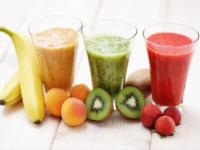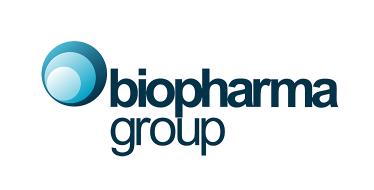 Add My Company
Add My Company
Sign In

A trend towards healthy eating has been growing globally for many years. Rising health concerns and the corresponding rising cost of healthcare itself has driven a move towards preventative healthcare and medicines. After all, isn’t prevention always better than cure?
Increased consumer demand for foods with health benefits has therefore grown alongside increasing disposable incomes. Probiotics and nutraceuticals are not only meeting that demand, but consumers are beginning to see the health rewards from taking them. They are becoming more easily available, cheaper to produce, and consumers are becoming increasingly aware of their efficacy as clinical evidence builds. As a result, the global probiotics market is projected to reach $64.02 billion by 2022[1], and the global nutraceuticals market will reach $578.23 billion by 2025[2].
That’s a LOT of people keen to maintain their health.
Where Do Probiotics and Nutraceuticals Come From?
Probiotics are living organisms such as bacteria and yeasts which are found naturally in many foods. When consumed in sufficient quantities, they can help maintain a healthy digestive system, lower cholesterol and even boost your immune system.
Nutraceuticals (also known as functional foods, medical foods, designer foods or nutritional supplements) are also naturally derived products, which provide additional health benefits aside from their basic nutritional value. Vitamins, minerals, herbs and enzymes can all have nutraceutical properties and are believed to help combat such ailments as obesity, cancer, osteoporosis and cardiovascular disease.
The health benefits of foods containing these substances have been known for many years and aren’t difficult to work into one’s diet.
Probiotics occur naturally in fermented foods such as yoghurt, sauerkraut, tempeh, miso, pickles, olives and various cheeses. On the other hand, you can find nutraceutical vitamins, minerals and nutrients in many fruits, vegetables, beans, fish and seeds; all common supermarket staples. However, even foods that are rich sources of probiotics and nutraceuticals tend to contain relatively small quantities, especially when you’re trying to achieve a specific health benefit.
With new technology we are now able to extract, concentrate, and consume probiotics and nutraceuticals in greater and more beneficial amounts, which would not be possible through consumption of the source food alone.
High-Pressure Homogenisation (HPH) – which has long been used in the pasteurisation of milk – is one such technological advancement which is now being used in the production of nutraceuticals. Subjecting nutraceutical compounds to HPH can help to maintain the bioactive compounds and can present a better alternative than thermal treatment for functional supplements containing heat-sensitive compounds.
Dynamic Vapour Sorption (DVS), a gravimetric technique that measures how quickly a sample absorbs a solvent vapour, is another new technology helping us to produce more stable nutraceuticals. It helps to determine upper and lower humidity limits for storage of products and reveals reversible and permanent changes in materials caused by increased humidity.
With these advancements, not only are we now able to produce nutraceuticals and probiotics in capsule form, we are also able to fortify other foods with them. Fortified or enriched foods include cereal, smoothies, nuts and seeds, milk … and even chocolate!
Production Challenges
Some of the difficulties in producing viable products include ensuring that they are stable, concentrated, and have an increased shelf life – all whilst maintaining their chemical structure to confirm they still provide the expected health benefits.
Manufacturers must also be able to yield large enough quantities of stable and viable product to batch produce as capsules, or to be added to dried foods as a fortifier.
The additional challenge with probiotics is that you are dealing with living organisms. It’s vital that they reach the gut alive, or they will have no benefit at all.
The Solution – Freeze Drying
Freeze drying (lyophilisation) was initially developed for the preservation of medical supplies and has since been applied to the preservation of food – and now pharmaceutical and nutraceutical products.
Preservation of probiotics and nutraceuticals by freeze-drying presents an effective solution to all of the above challenges. Not only does this method stabilise the product, but it concentrates large quantities down to a very small volume, increasing its potency and producing sizable batches. It also means the end product will not need refrigeration, making it very easy to transport and store.
This method also produces a significantly more viable product than other processes, especially when it comes to probiotics. Many more bacteria survive the freeze-drying process than with other preservation methods – but they must be protected against the additional stress that freeze-drying puts on bacterial cells with a cryo-protectant such as trehalose, sucrose, glycerol or skimmed milk powder.
Whilst potentially cheaper and faster preservation methods exist, such as spray drying, vacuum oven drying and fluid bed drying, none can match freeze drying when it comes to maintaining the viability of cells. With alternative methods, high temperatures can cause chemical and physical changes to the product, whereas lyophilisation preserves them with low water activity post-lyophilisation; this results in no fundamental changes to the item’s make-up. Freeze-drying is, therefore, the most commonly used form of probiotic dehydration.
To read the full article please visit our website
For more information on Freeze drying is helping meet the demand for probiotics and nutraceuticals across the food and health industries. talk to Biopharma Group
Enquire Now
More News
List your company on FindTheNeedle.

